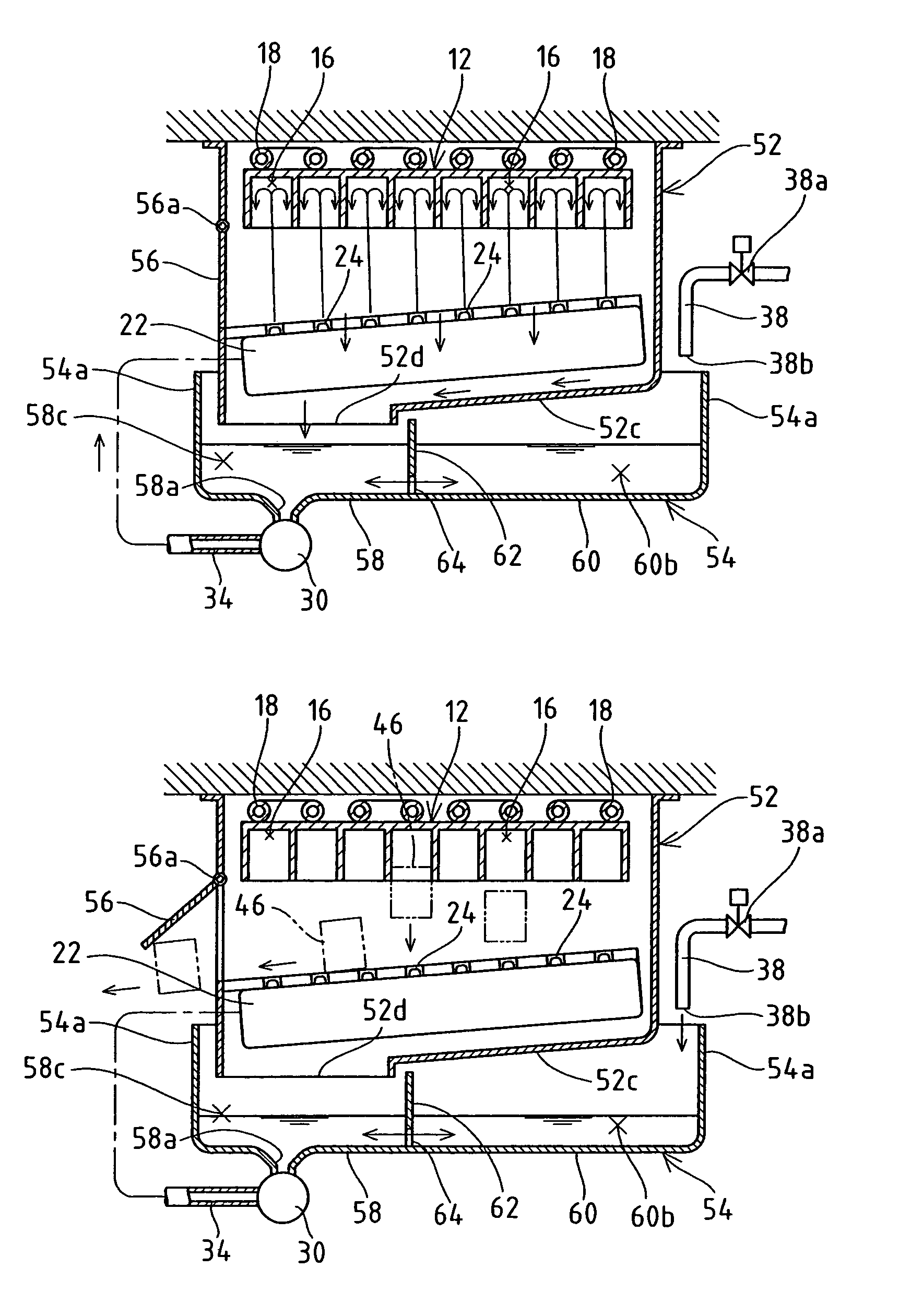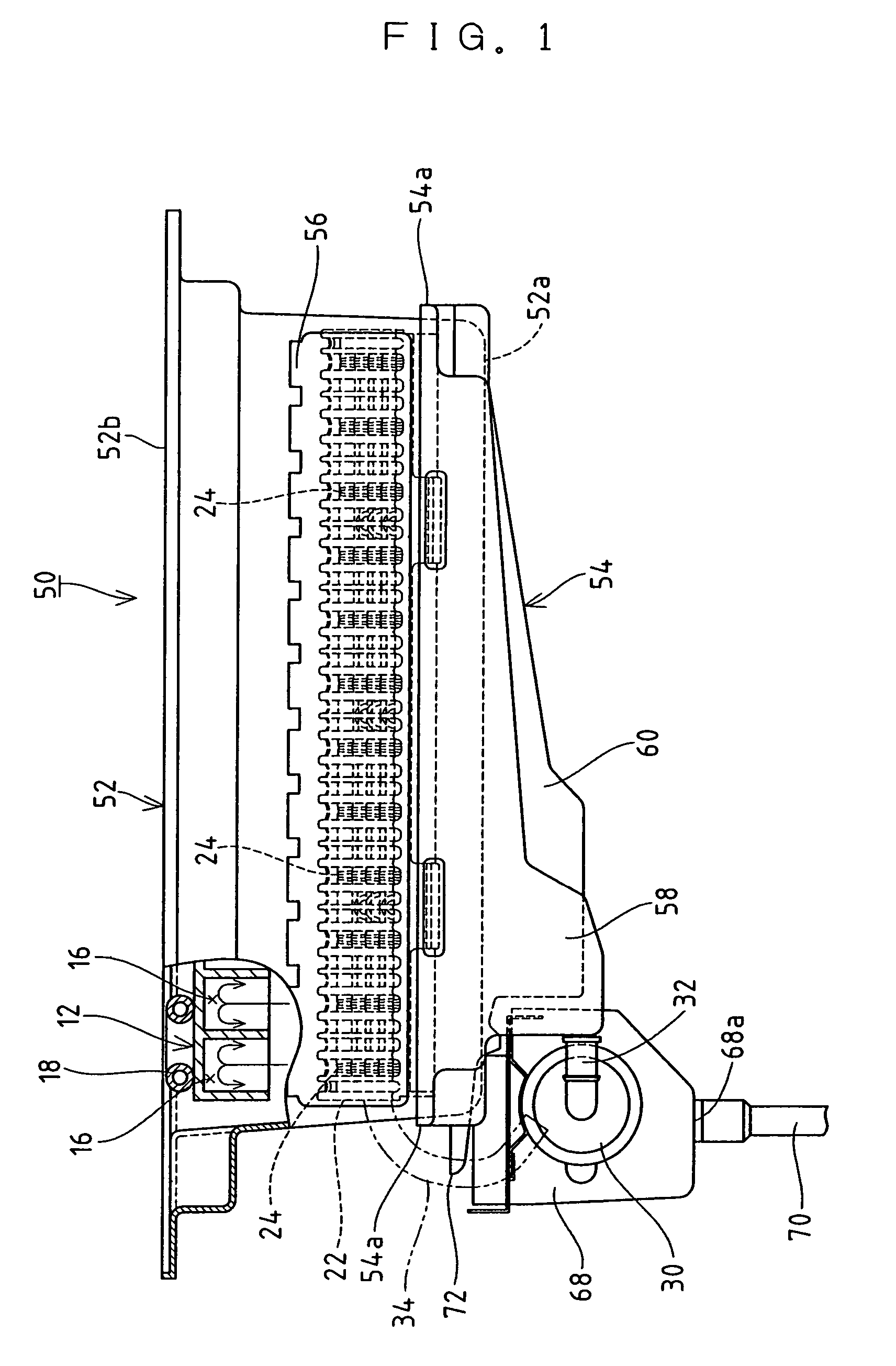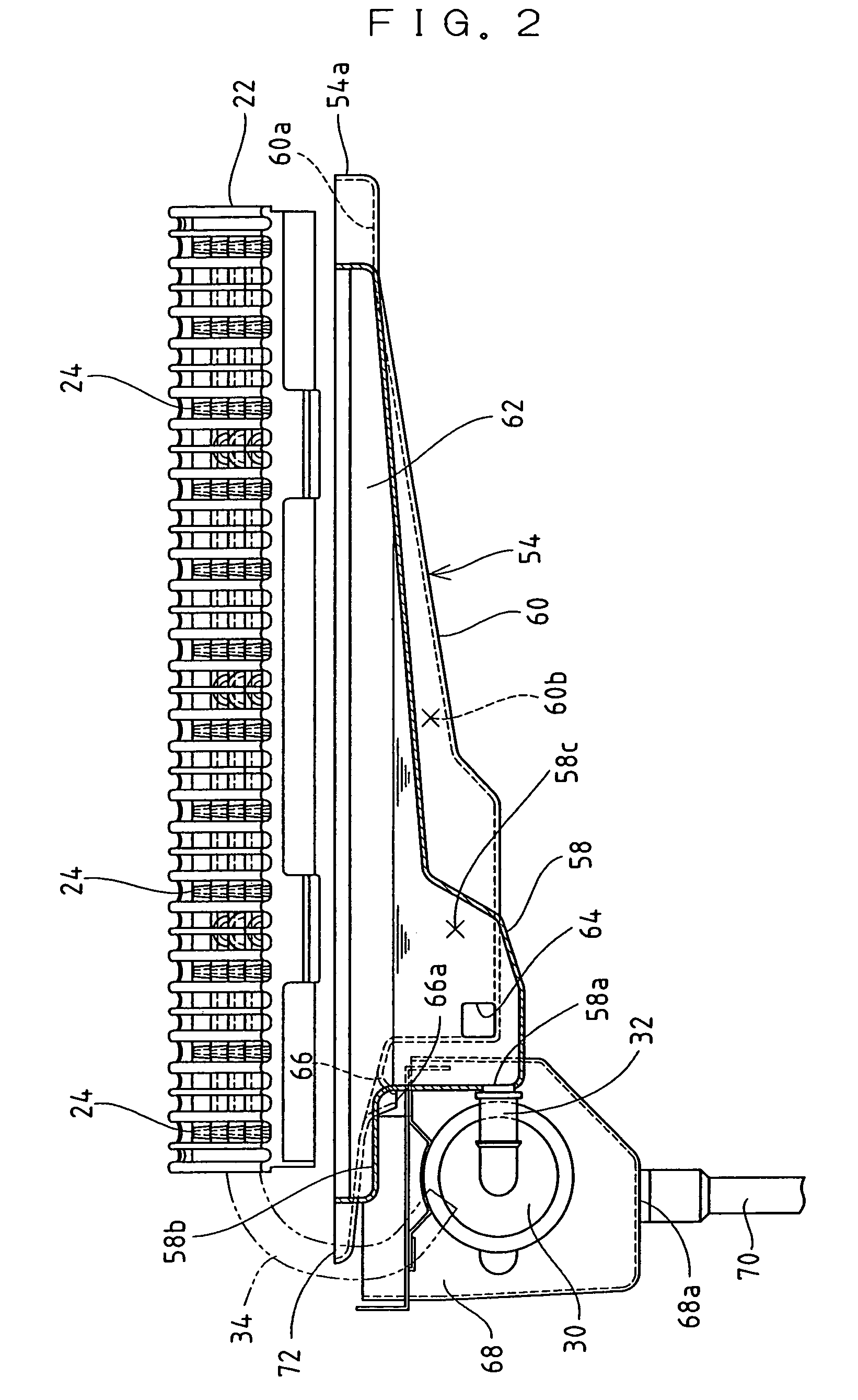Ice-making mechanism of ice-making machine
- Summary
- Abstract
- Description
- Claims
- Application Information
AI Technical Summary
Benefits of technology
Problems solved by technology
Method used
Image
Examples
embodiment 1
[Operation of Embodiment 1]
[0037]The operation of the ice-making mechanism of an ice-making machine in Embodiment 1 is described below. First, an ice-making process by the ice-making mechanism in Embodiment 1 is briefly described using FIG. 3. When ice-making operation is started, a refrigerant circulates through the evaporation pipe 18 and the ice-making compartments 16 are force-cooled. Also, the ice-making water in the ice-making water tank 54 is pressure-fed to the water tray 22 by the pump motor 30 and spray-supplied to each ice-making compartment 16 via each water-spraying hole 24. The water is cooled on inner wall surfaces of the ice-making compartments 16 and begins to freeze in a laminar form. As shown in FIG. 3(a), un-iced water that has not become iced flows downward through the return hole of the water tray 22, then drips onto the guide 52c of the mechanical base 52 that is positioned below the guide 52c, and is dropwise collected from the opening 52d into the circulatin...
embodiment 2
[Operation of Embodiment 2]
[0063]Next, the operation of the ice-making mechanism of an ice-making machine in Embodiment 2 is described below. First, an ice-making process by the ice-making mechanism in Embodiment 2 is briefly described using FIG. 5 or 6. During ice-making operation, the water tray 22 and ice-making water tank 82 in the above-mentioned ice-making mechanism close the ice-making compartments 16 from below and are positioned horizontally and each water-spraying hole 24 faces an associated ice-making compartment 16. When ice-making operation is started, a refrigerant circulates into the evaporation pipe 18 and the ice-making compartments 16 are force-cooled. Also, the ice-making water in the ice-making water tank 82 is pressure-fed to the water tray 22 by the pump motor 30 and after being spray-supplied to each ice-making compartment 16 via each water-spraying hole 24 to start icing in a laminar form. Un-iced water, i.e., water that has not become iced after being spraye...
modification examples
[Modification Examples]
[0071]Provided that the guide described above is adapted so as to accept the un-iced water dripping from the water tray 22 and guide the dripping un-iced water to the circulating tank section and in order for no such water to flow directly into the retention tank section, it is likewise possible to employ the construction in which the guide has a smooth and flat surface, or the construction in which the guide is fixed. In addition, in terms of the relationship in position between the circulating tank section 84 and retention tank section 86 in Embodiment 2, both tank sections are formed in parallel to a direction orthogonal to the axial direction of the support axis 23 by being separated by the partition plate 88 extending in the axial direction of the support axis 23. However, a partition plate extending in a direction orthogonal to the axial direction of the support axis 23 may be used to separate the above two tank sections so as to make both parallel to th...
PUM
 Login to view more
Login to view more Abstract
Description
Claims
Application Information
 Login to view more
Login to view more - R&D Engineer
- R&D Manager
- IP Professional
- Industry Leading Data Capabilities
- Powerful AI technology
- Patent DNA Extraction
Browse by: Latest US Patents, China's latest patents, Technical Efficacy Thesaurus, Application Domain, Technology Topic.
© 2024 PatSnap. All rights reserved.Legal|Privacy policy|Modern Slavery Act Transparency Statement|Sitemap



